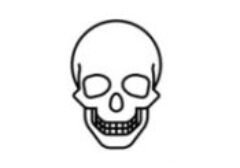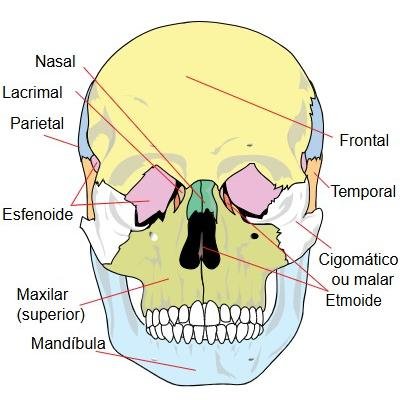Contents
- 1 Introduction
- 2 What is the Anatomical Skull?
- 3 Bones of the Skull
- 4 Overview of Skull Anatomy
- 5 Anatomy of the Cranium
- 6 The Facial Skeleton
- 7 Muscles Associated with the Skull
- 8 Internal Skull Anatomy and Brain Protection
- 9 Anatomical Skull Models and Educational Tools
- 10 Conclusion: The Significance of Understanding Anatomical Skull
Introduction
The anatomical skull is a complex structure composed of multiple bones that encase and protect the brain, as well as support the structures of the face. This intricate arrangement not only serves as a crucial protective barrier for the delicate tissues of the central nervous system but also plays an essential role in various functions such as respiration, communication, and mastication. Understanding the anatomy of the skull is vital for students of medicine, practitioners of healthcare, and enthusiasts of human biology, as it provides insights into both normal functioning and potential pathologies that can affect this area.
At its core, the skull can be divided into two main parts: the cranium and the facial skeleton. The cranium consists of eight bones that form the protective casing for the brain, including the frontal, parietal, occipital, temporal, sphenoid, and ethmoid bones. Conversely, the facial skeleton comprises fourteen bones that provide structure and shape to the face. Each bone contributes to the overall integrity of the skull and has unique features that serve specific purposes, from housing sensory organs to facilitating movement of the jaw.
Not only is the anatomical skull significant for understanding human anatomy in a medical context, but it also carries considerable relevance in fields such as anthropology and forensic science. By studying variations in skull shape and size, researchers can glean information about evolutionary trends, individual identity, and even population health. Given its multifaceted nature and central importance in understanding human physiology, a thorough examination of skull anatomy is paramount, bridging various disciplines and enhancing our overall comprehension of the human body.
What is the Anatomical Skull?
The anatomical skull constitutes a complex structure designed primarily to serve as the protective casing for the brain while also providing support for the facial skeleton. It comprises two main parts: the cranium, which encases the brain, and the facial skeleton, which gives shape and support to the face. The human skull is an intricate assembly of 22 bones, categorized into 8 cranial bones and 14 facial bones, each with distinct roles and functions.
The primary function of the anatomical skull is its protective capacity. It forms a sturdy barrier against physical trauma, shielding the delicate brain from impacts. In addition to protection, the skull plays a pivotal role in housing various sensory organs, such as the eyes, ears, and nasal cavities, significantly contributing to functions such as vision, hearing, and olfaction.
From an anatomical perspective, the composition of the skull exhibits unique features. For instance, the cranial bones are interlocked by structures known as sutures, which permit minimal movement that aids in adaptability during the birth process and allows for the brain’s growth during childhood. The facial skeleton, on the other hand, serves essential roles in the articulation of speech and mastication by providing attachment points for muscles used in chewing and facial expressions.
The anatomical diversity of the human skull, notably its shape and size variations, is fascinating. These variations can be influenced by genetic, environmental, and dietary factors, contributing to the uniqueness of individual skulls. Furthermore, the skull aids in determining evolutionary relationships among different human populations through comparative anatomy, illustrating its significance in both biological and anthropological studies.
Through understanding the anatomical skull’s composition, functions, and structural characteristics, one gains insight into its crucial role in human physiology and evolution.
Bones of the Skull
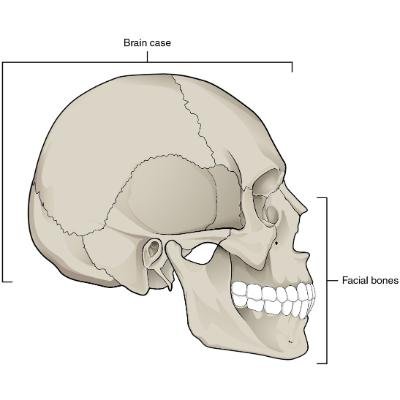
The adult human skull comprises 22 bones, divided into two categories: the cranial bones and the facial bones.
Cranial Bones
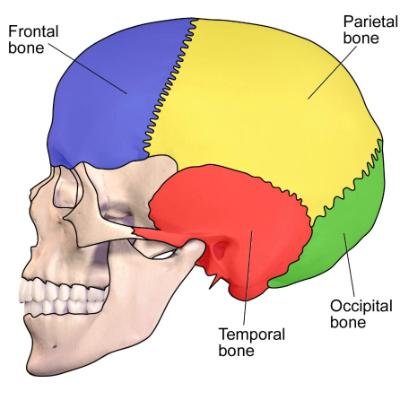
These bones encase the brain and contribute to its protection.
Frontal Bone
The bone located at the forehead.
Parietal bone
This bone is located in the upper lateral part of the head.
Temporal Bone
On the sides of the head, accommodating our ears.
Occipital Bone
Found at the back of the skull, crucial for brain protection.
Sphenoid Bone
A butterfly-shaped bone that helps form the base of the skull.
Facial Bones
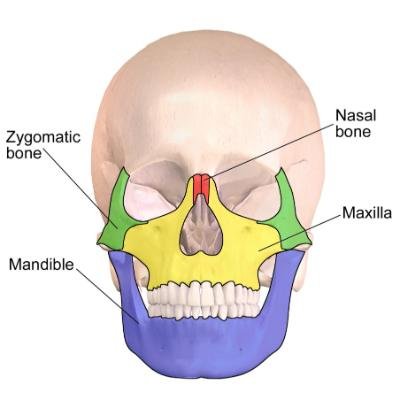
In addition to the cranial bones, the skull also has facial bones such as the mandible (jawbone), maxilla (upper jaw), and zygomatic bones (cheekbones). Each bone serves a specific function, from supporting facial structure to facilitating essential functions like chewing and breathing.
By exploring the list of skull bones, we gain a better understanding of not only their functions but also their historical significance in evolution and biology. The intricate architecture of the skull showcases the complexity and artistry of human anatomy.
Overview of Skull Anatomy
The human skull is a complex bony structure that serves multiple functions, primarily protecting the brain and providing structure to the face. It is comprised of two main categories of bones: cranial bones and facial bones. Understanding the anatomy of the skull is essential in various fields, including medicine, anthropology, and forensic science.
The cranial bones are responsible for encasing and safeguarding the brain. There are eight cranial bones in total: the frontal bone, parietal bones (two), temporal bones (two), occipital bone, sphenoid bone, and ethmoid bone. These bones are intricately fused together, forming a protective dome-like structure known as the cranium. Within this skull section, one can find important features such as the foramen magnum, a large opening that allows the spinal cord to connect with the brain.
In contrast, the facial bones consist of fourteen bones that contribute to the structure of the face. These include the nasal bones (two), maxillae (two), zygomatic bones (two), palatine bones (two), lacrimal bones (two), inferior nasal conchae (two), and the mandible, which is the only movable bone in the skull. The facial skeleton plays a crucial role in functions such as eating, speaking, and expression.
Moreover, the skull houses several important features, including the orbits (eye sockets), nasal cavity, and various foramina through which nerves and blood vessels pass. Interestingly, the relationship between the cranial and facial bones as well as their respective sutures and foramina is vital for maintaining the overall integrity and functionality of the skull. Visual aids, like labeled diagrams, can greatly enhance one’s understanding of these structures, providing clarity to the intricate details within skull anatomy.
Anatomy of the Cranium
The cranium is a vital component of the human skull, serving to protect the brain and provide structure to the head. It is composed of eight distinct bones, each contributing to the overall form and function of the skull. Understanding the anatomy of these cranial bones is crucial for various fields, including medicine, anthropology, and archaeology.
The frontal bone, located at the forehead, forms the anterior part of the cranium. It provides support for the forehead and the upper eye sockets while playing a significant role in the formation of the cranial cavity that houses the brain. Next, the parietal bones—two in number—are situated on the sides and roof of the cranium. They engage in articulation with the frontal, occipital, and temporal bones, contributing to the overall strength and structure of the skull.
At the posterior, the occipital bone forms the back and base of the cranium. This bone features the foramen magnum, a crucial opening through which the spinal cord connects with the brain. Lateral to the occipital bone are the temporal bones, also a pair, which encompass the structures of the ear and are essential for hearing. They also contain an array of important landmarks such as the mastoid process and zygomatic process, integral for muscle attachment.
Additionally, the sphenoid bone, a complex bone at the base of the cranium, uniquely resembles a butterfly. It has various articulations with other skull bones, and its central location makes it a critical point of strength for cranial stability. Lastly, the ethmoid bone, located between the eyes, is a lightweight bone that forms part of the nasal cavity and contributes to the structure of the orbits. Its intricate design includes several recesses that serve as passages for nerves and blood vessels.
Overall, the anatomy of the cranium is a delicate arrangement of bones working cohesively to protect the brain and facilitate important functions, underscoring its significance in human physiology.
The Facial Skeleton
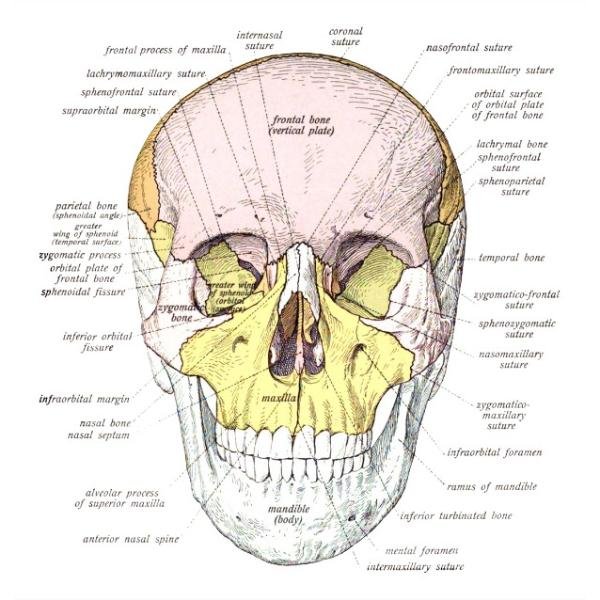
The facial skeleton, a vital component of the human skull, comprises 14 distinct bones that collectively shape the structure of the face. These bones not only provide support and protection to the facial features but also play a significant role in various physiological functions, including respiration, mastication, and articulation. The facial skeleton includes the nasal bones, maxillae, zygomatic bones, palatine bones, lacrimal bones, inferior nasal conchae, vomer, and mandible.
To begin with, the nasal bones form the bridge of the nose, providing structural support and aesthetic definition to the face. The paired maxillae are crucial as they hold the upper teeth and form part of the orbits, contributing to both the shape and function of the face. Moving laterally, the zygomatic bones, commonly referred to as the cheekbones, contribute to the prominence of the cheeks and assist in sheltering the eyes.
The palatine bones, located at the back of the oral cavity, form the hard palate, separating the oral and nasal cavities. This separation is essential for effective oral and nasal function. Meanwhile, the lacrimal bones, the smallest ones in the facial skeleton, play a role in the drainage of tears, situated within the medial wall of the orbits. The inferior nasal conchae, which are also paired, serve to increase the surface area within the nasal cavity, enhancing the warming and filtering of inhaled air.
The vomer, forming part of the nasal septum, aids in dividing the nasal passages, while the mandible, the only movable bone of the skeleton, is critical for chewing and speech. Each of these bones interconnects, contributing to the aesthetic shape of the face and ensuring that it functions effectively in daily activities. Understanding the intricate anatomy of the facial skeleton not only highlights its structural significance but also sheds light on its impact on individual appearance and function.
Muscles Associated with the Skull
The human skull serves not only as a protective structure for the brain but also as an attachment point for a variety of muscles, which play crucial roles in facial expressions, mastication (chewing), and head movements. These muscles work in concert with the skeletal features of the skull, providing both motion and expression necessary for communication and various daily activities.
One of the primary muscle groups associated with the skull is the muscles of facial expression, which include the frontalis, orbicularis oculi, and zygomaticus major. These muscles are responsible for conveying emotions such as joy, surprise, and sadness through the movement of facial features. For instance, the frontalis muscle raises the eyebrows, while the zygomaticus major helps in smiling. Such movements are integral to non-verbal communication, reinforcing the social aspects of human interaction.
In addition to facial muscles, the muscles responsible for mastication are also crucial. The masseter and temporalis muscles are particularly prominent among these, as they allow for the powerful and precise motion required to chew food. The masseter, which runs from the cheekbone to the mandible, is one of the strongest muscles in the human body. Its contraction elevates the lower jaw, enabling the grinding motion necessary for effective chewing. The temporalis muscle, located on the side of the head, assists in this process as well, coordinating with the jaw’s movements.
Furthermore, the muscles that facilitate head movement, such as the sternocleidomastoid, connect the skull to the neck. They enable a vast range of movements, from nodding to turning the head. The interplay between these muscles and the skeletal structure of the skull highlights the complexity and functionality of this vital anatomical region.
Internal Skull Anatomy and Brain Protection
The internal anatomy of the skull plays a fundamental role in safeguarding the brain, which is a vital organ responsible for cognitive functions. The skull is comprised of two main parts: the neurocranium and the viscerocranium. The neurocranium, which encases the brain, is made up of several bones that form a protective vault, while the viscerocranium supports the facial structure. Together, these components create a robust barrier against physical trauma, providing essential protection to delicately structured neural tissues.
The inner surface of the skull is relatively smooth, but it features numerous foramina and grooves that allow for the passage of cranial nerves and blood vessels. Additionally, the meninges, which consist of three layers—dura mater, arachnoid mater, and pia mater—are situated between the skull and the brain. These membranes encapsulate the brain and cerebrospinal fluid, further enhancing cerebral protection. The cerebrospinal fluid, contained within the subarachnoid space, acts as a cushion, absorbing shocks and reducing the risk of injury during impacts.
Intricately, the formation of the skull is significant not only for physical defense but also for maintaining the brain’s structural integrity during various activities. The sphenoid bone, for example, plays a unique role in conveying forces during activities such as chewing or head movement. Moreover, the facial bones contribute to the overall stability and alignment of the skull, which is crucial in protecting sensitive areas involved in sensory functions, such as vision, hearing, and taste.
Understanding the internal anatomy of the skull and its relationship to brain protection is essential for recognizing the potential consequences of cranial injuries. Healthcare professionals often emphasize the importance of protective headgear during sports and other high-risk activities to prevent traumatic brain injuries. Overall, the skull’s structure serves not only as a protective barrier but also as a fundamental aspect of human anatomy that supports and maintains critical brain functions.
Anatomical Skull Models and Educational Tools
Anatomical models of the skull serve as essential tools in both educational settings and research environments, facilitating a deeper understanding of cranial anatomy. These three-dimensional representations allow students, medical professionals, and researchers to visualize the complex structure of the skull, enhancing their grasp of its various components and functions. Through the use of anatomical skull models, learners can engage with the intricate details of cranial anatomy, from the sutures and foramina to the individual cranial bones. This graphical representation plays a crucial role in bridging theoretical knowledge and practical application.
Moreover, these models come in various forms, including realistic replicas, interactive digital representations, and disarticulated models that showcase individual bones. Each type of model offers unique advantages for educational purposes. For instance, high-quality physical models allow for tactile learning, where students can handle the materials and gain a tangible sense of scale and orientation. Conversely, digital skull models provide interactivity and the ability to visualize three-dimensional structures from different angles, thereby enriching the learning experience.
Some notable anatomical skull models widely recognized in medical education include the Somso skull model and the 3B Scientific anatomy skull, each illustrating intricate details of the human skull accurately. Additionally, cutting-edge technologies such as virtual reality (VR) offer immersive experiences, furthering comprehension of skull anatomy and its relevance to surrounding biological systems. Embracing such educational tools is vital for educators aiming to equip students with a thorough understanding of cranial anatomy and its clinical implications. Ultimately, anatomical skull models provide invaluable resources for both teaching and research, reinforcing their significance in the realm of medical education.
Conclusion: The Significance of Understanding Anatomical Skull
Understanding the anatomical skull is a critical component in multiple fields, demonstrating its relevance in medicine, art, and education. Throughout this comprehensive guide, we have explored the intricate structure and various functions of the skull, including its role as a protective casing for the brain and a foundational framework for the face. The complexity of the anatomical skull not only warrants a detailed study but also serves as a key to unlocking numerous interdisciplinary applications.
In the medical realm, knowledge of skull anatomy is essential for healthcare professionals, particularly those specializing in neurology, orthodontics, and trauma surgery. Anomalies in the skull structure can indicate significant health concerns, making a thorough understanding imperative for accurate diagnosis and effective treatment. Furthermore, surgical procedures often require precise knowledge of cranial landmarks to minimize risks and enhance outcomes.
Artistic disciplines also benefit from an understanding of the anatomical skull. Artists engaged in realistic human representation must comprehend the underlying structures to accurately depict facial features and proportions. Moreover, sculptures and illustrations drawn from a deep knowledge of skull anatomy can convey authentic emotions and narratives, enriching the viewer’s experience.
Lastly, in educational settings, the anatomical skull serves as a fascinating subject for students of various ages. It can ignite interest in biological sciences, prompting further exploration into human anatomy and overall health. Interactive learning modalities, such as 3D modeling and virtual dissections, make studying the skull both engaging and informative. This foundational knowledge encourages curiosity and inspires future generations to pursue careers in science, healthcare, and the arts.
In summary, comprehending the anatomical skull is not merely an academic exercise; it holds practical significance across diverse fields. By appreciating its complexity and functionality, individuals can better understand their connection to the human body and the broader implications in both professional and personal contexts.
